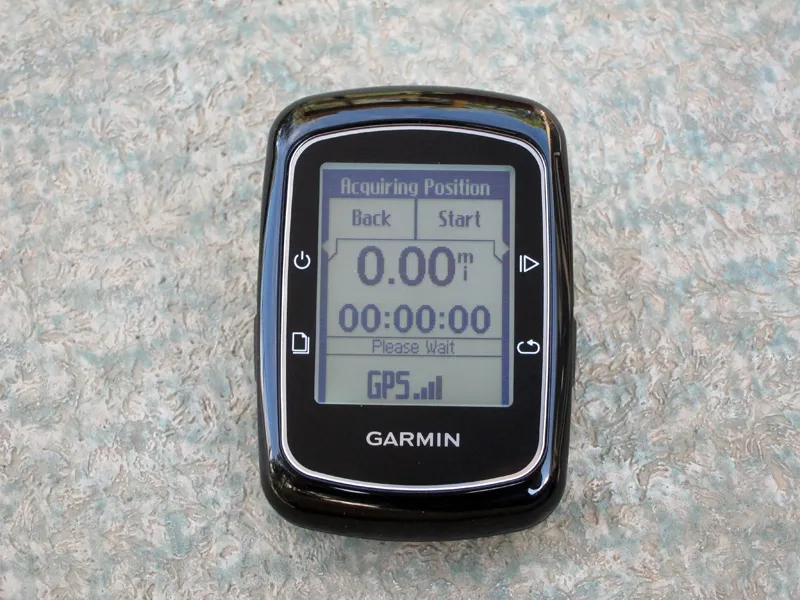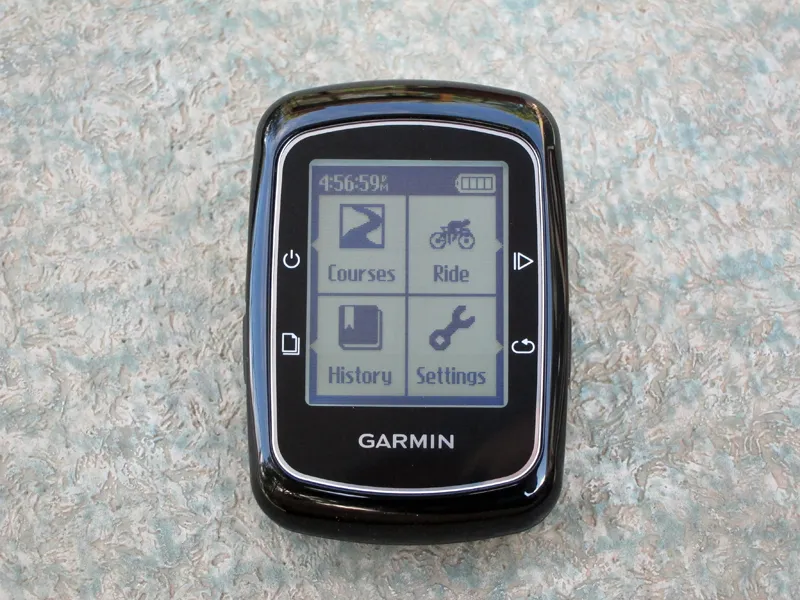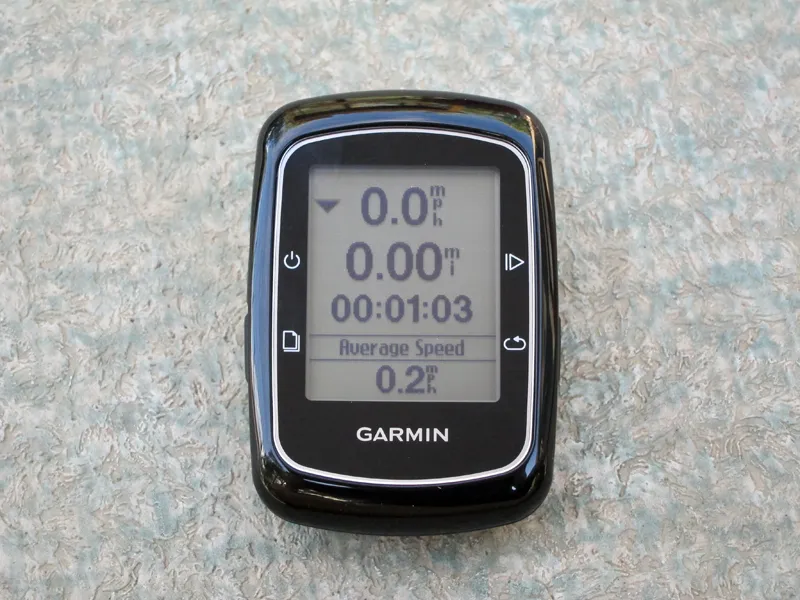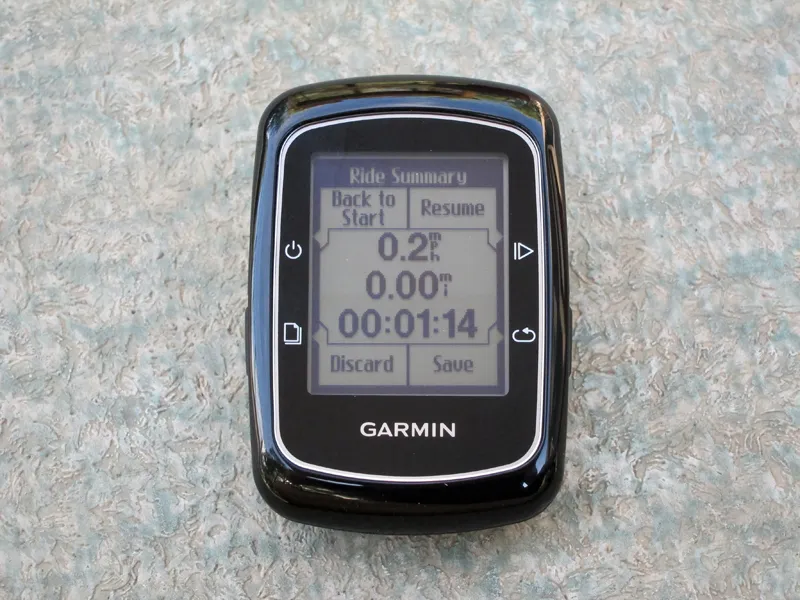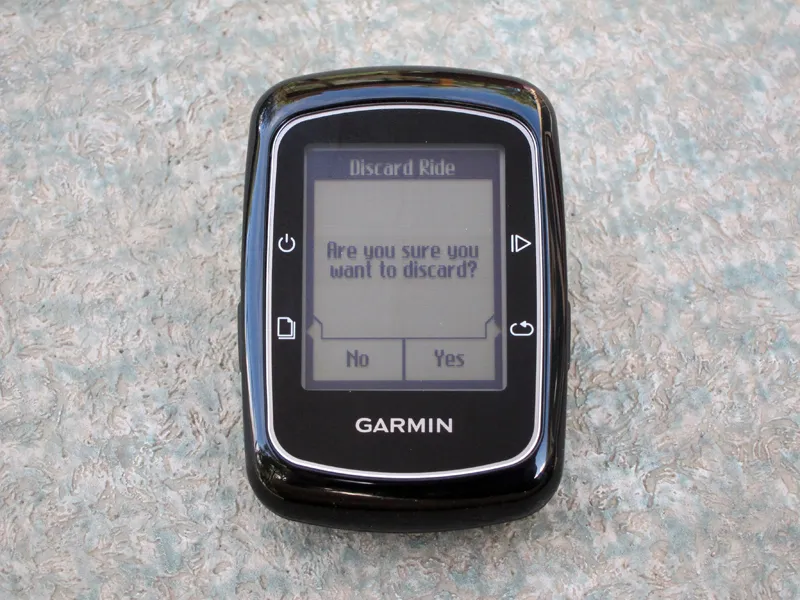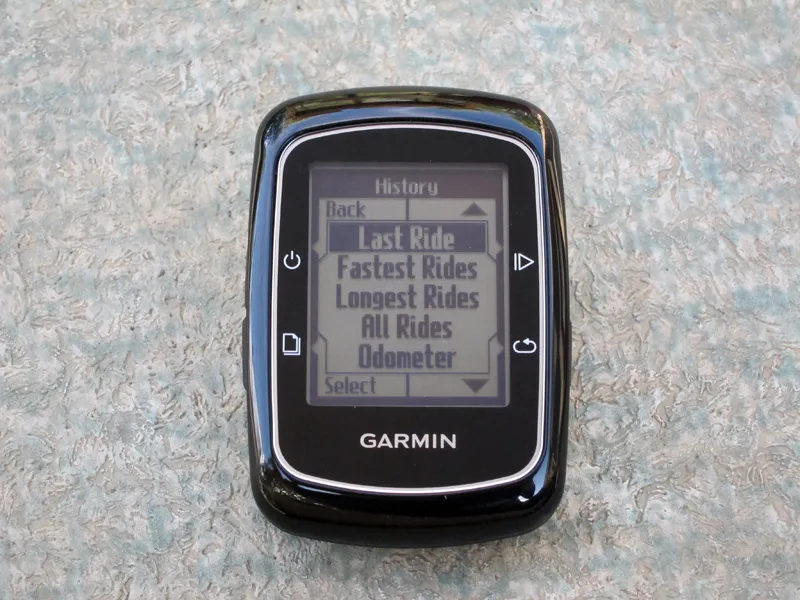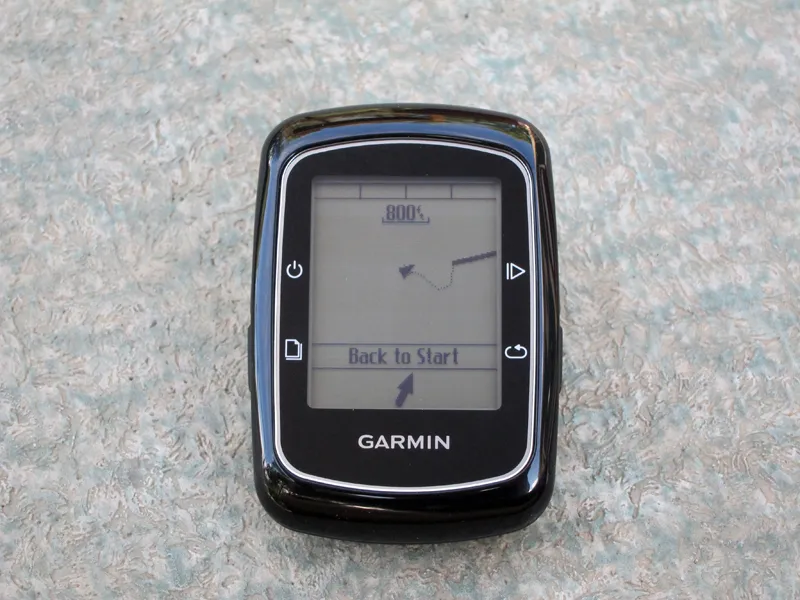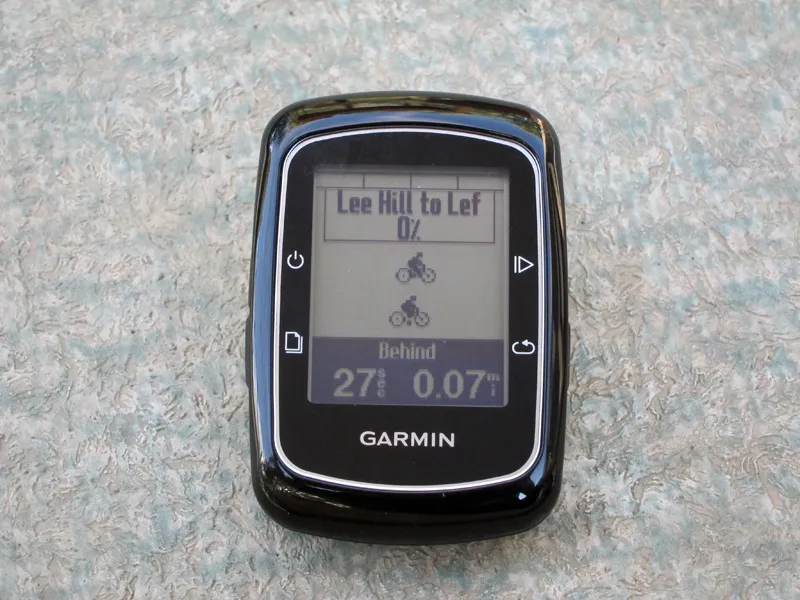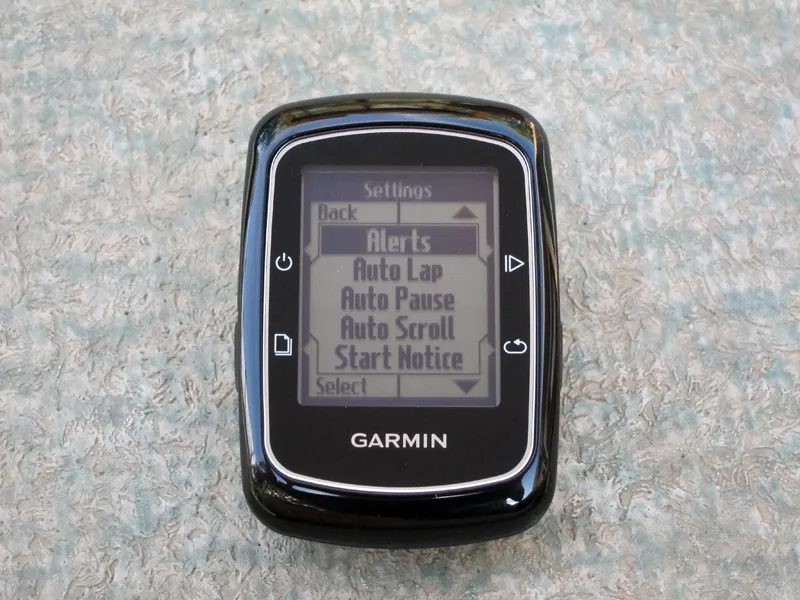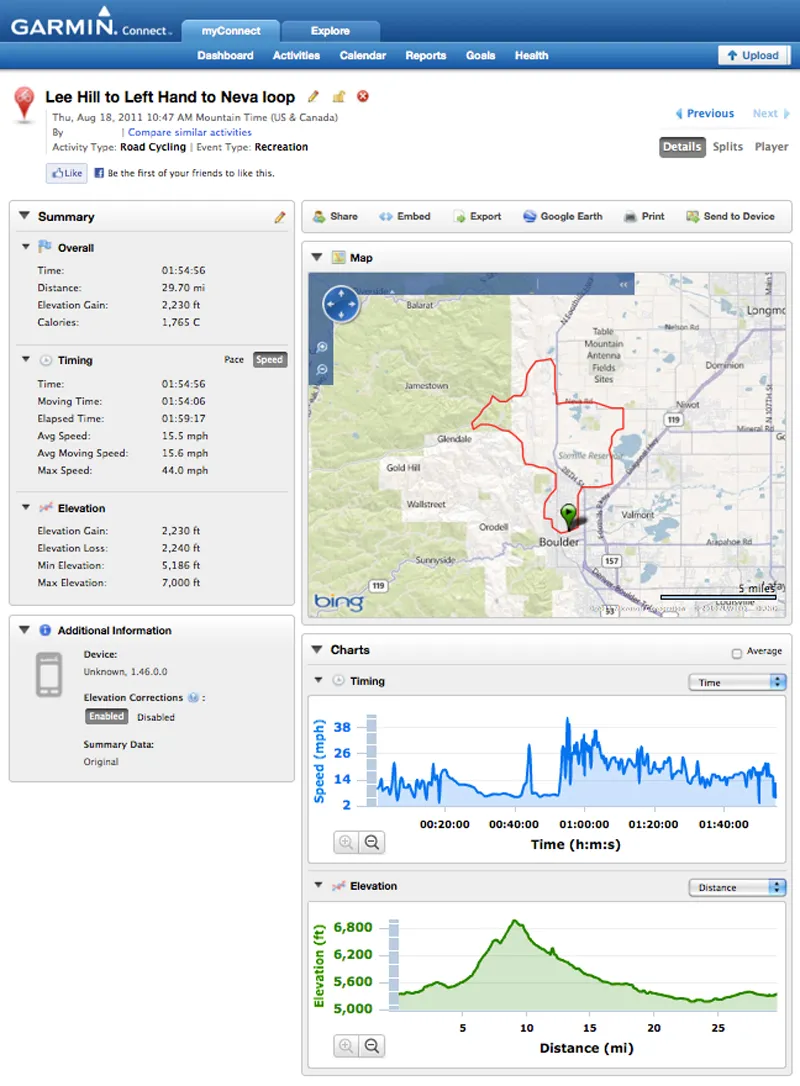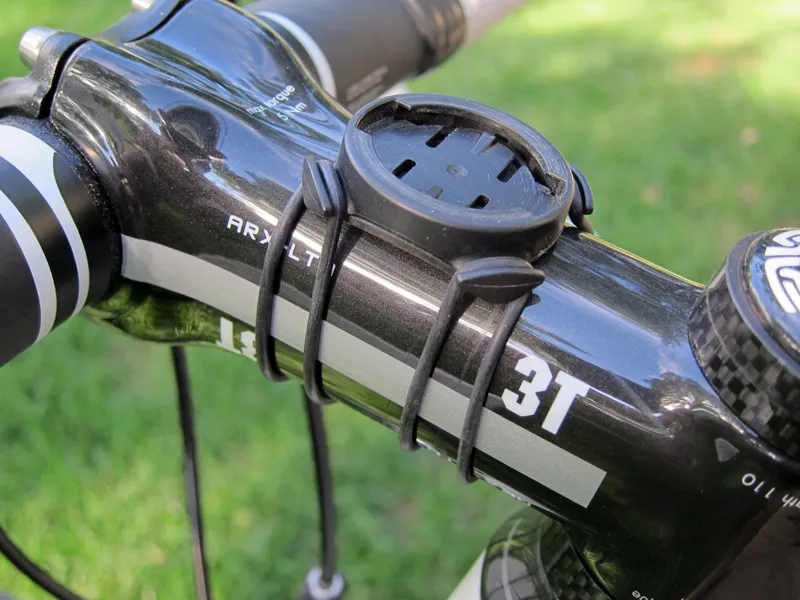Garmin's latest Edge 200 cycling computer blends the convenient GPS calibration and tidy form factor of the Edge 500 with a substantially simpler data set that's meant to appeal to more casual riders. It's more expensive than a conventional computer but cheaper than most other GPS units, and the downloadable features could make it worthwhile for cyclists who like to analyze – and archive – their rides at home.
The Edge 200 has the exact same casing and display size as the Edge 500 but with an arguably even more upscale aesthetic, with its sleek gloss black face and chrome bezel. The backlit dot matrix display looks to use the same pitch as the Edge 500, too, and the information is very easy to read even in bright sunlight.
Though the Edge 500 and 200 gather the same GPS information, the new computer offers up a simplified interface that's designed to cater to more recreational riders. Instead of the 500's eight separate configurable fields and 44 different pieces of data, the 200 offers up just four lines of information: current speed, trip distance, ride time – all of which are fixed – and one additional field at the bottom that can toggle between average speed, total ascent and calories burned. A handy up-or-down arrow indicates whether you've moving faster or slower than your average speed.
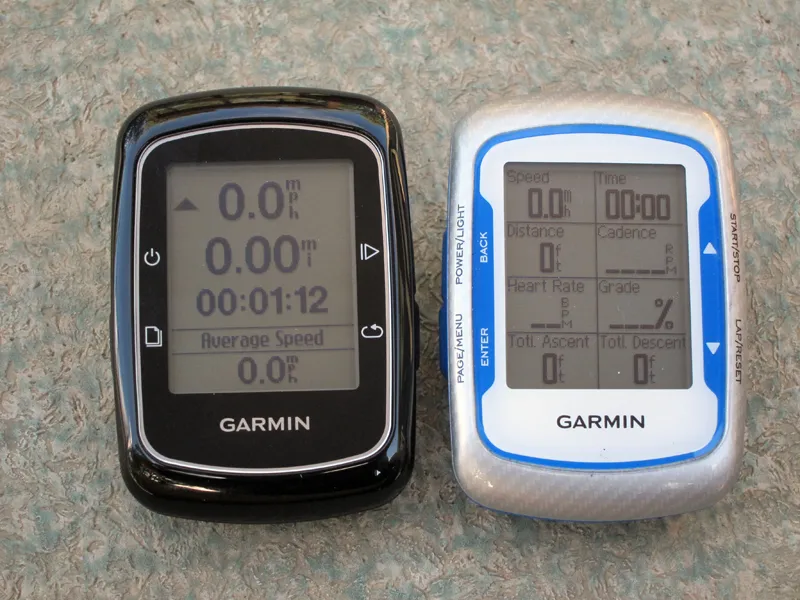
The new Garmin Edge 200 uses the same case as the Edge 500. The display fields aren't customizable and the information provided is limited but what's there is easy to read even in bright sunlight
Garmin have removed wireless capability from the Edge 200 so there's no capacity for heart rate, cadence or power output. Technically speaking, there's no mapping capability, either, though the unit will still visually guide users on an uploaded course and indicate whether you're on pace – handy for fitness goals or to track year-on-year progress for a regular annual ride. A handy 'back to start' feature directs you back to your starting position if you get lost.
More data-intensive cyclists will likely be disappointed with such a truncated data display relative to Garmin's more advanced units, but the upside is a wonderfully elegant and simple-to-use device that pares things down to the bare essentials. The current speed and distance fields are the biggest on the display and very easy to view at a glance, the GPS functionality means there's no calibration or additional magnets or sensors required – simply fire it up, wait a few seconds for the unit to locate satellites and then go – and the large display uses an icon-based menu and button format that's highly intuitive to configure and use. Garmin didn't include a manual with our test sample and we never felt the need to consult one before heading out for a spin.
Garmin claim a 14-hour battery life per charge on the Edge 200 but that figure seems conservative, with our initial two-hour ride eating up only six percent of the total battery capacity according to the onboard meter. Granted, basic wireless computers can run for a year or more before having to swap a battery but they don't offer as much capability. Charging the Edge 200 is done via the rear USB port, meaning you can plug it into the wall with the included charger or your computer with a standard USB cord.
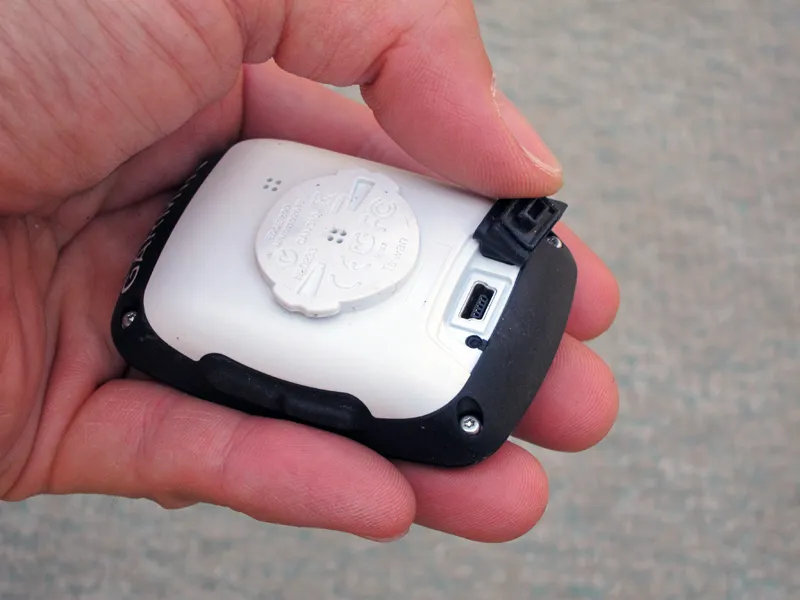
The standard USB port on the back is used for recharging the battery or connecting the Garmin Edge 200 to your computer for uploads and downloads
Invariably people will wonder why, if all the Edge 200 displays is that basic set of info, it's worth spending so much money over a standard wireless computer. Cyclists who already use online databases such as GarminConnect or Strava can attest that logging those rides quickly becomes very addictive ("If it's not on GPS, it didn't happen") and what the Edge 200 essentially does is make the drugs a lot cheaper.
Uploading the Edge 200's data to GarminConnect's site, for example, shows the route ridden along with a variety of other handy charts and graphs, plus it allows you to export that information to Google Maps or Google Earth. The online file also adds a few extra data fields such as total descent, maximum speed, and minimum and maximum elevation (but not ambient temperature). And of course, you can send all of this information to your buddies or post to Twitter, Facebook or even directly to popular blog formats.
So is the Edge 200 groundbreaking? Perhaps not, but for its target market, it seems like Garmin have hit things pretty much spot-on, offering up what seems to be the cheapest GPS computer on the market – with all of the convenience benefits included therein – with a data set pared down to only those fields that most casual riders care about. The local retailers we surveyed suggested that the new Edge 200 could easily outpace the Edge 500 by two-to-one.
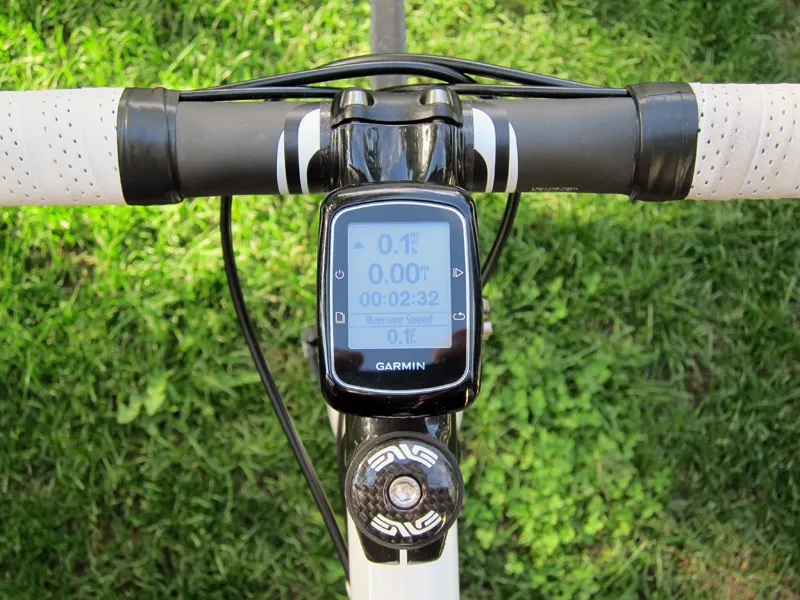
The Garmin Edge 200 may be the least expensive cycling computer in the company's lineup but you wouldn't be able to tell by its upscale appearance on the bike
